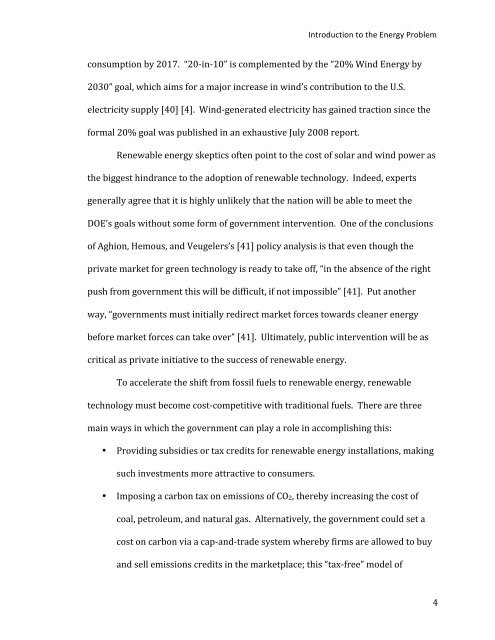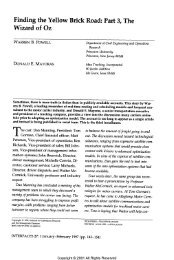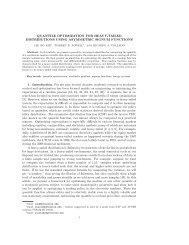Hummer, Merritt-senior thesis final April 2010.pdf - CASTLE Lab ...
Hummer, Merritt-senior thesis final April 2010.pdf - CASTLE Lab ...
Hummer, Merritt-senior thesis final April 2010.pdf - CASTLE Lab ...
Create successful ePaper yourself
Turn your PDF publications into a flip-book with our unique Google optimized e-Paper software.
Introduction to the Energy Problem<br />
consumption by 2017. “20-‐in-‐10” is complemented by the “20% Wind Energy by<br />
2030” goal, which aims for a major increase in wind’s contribution to the U.S.<br />
electricity supply [40] [4]. Wind-‐generated electricity has gained traction since the<br />
formal 20% goal was published in an exhaustive July 2008 report.<br />
Renewable energy skeptics often point to the cost of solar and wind power as<br />
the biggest hindrance to the adoption of renewable technology. Indeed, experts<br />
generally agree that it is highly unlikely that the nation will be able to meet the<br />
DOE’s goals without some form of government intervention. One of the conclusions<br />
of Aghion, Hemous, and Veugelers’s [41] policy analysis is that even though the<br />
private market for green technology is ready to take off, “in the absence of the right<br />
push from government this will be difficult, if not impossible” [41]. Put another<br />
way, “governments must initially redirect market forces towards cleaner energy<br />
before market forces can take over” [41]. Ultimately, public intervention will be as<br />
critical as private initiative to the success of renewable energy.<br />
To accelerate the shift from fossil fuels to renewable energy, renewable<br />
technology must become cost-‐competitive with traditional fuels. There are three<br />
main ways in which the government can play a role in accomplishing this:<br />
• Providing subsidies or tax credits for renewable energy installations, making<br />
such investments more attractive to consumers.<br />
• Imposing a carbon tax on emissions of CO2, thereby increasing the cost of<br />
coal, petroleum, and natural gas. Alternatively, the government could set a<br />
cost on carbon via a cap-‐and-‐trade system whereby firms are allowed to buy<br />
and sell emissions credits in the marketplace; this “tax-‐free” model of<br />
4








